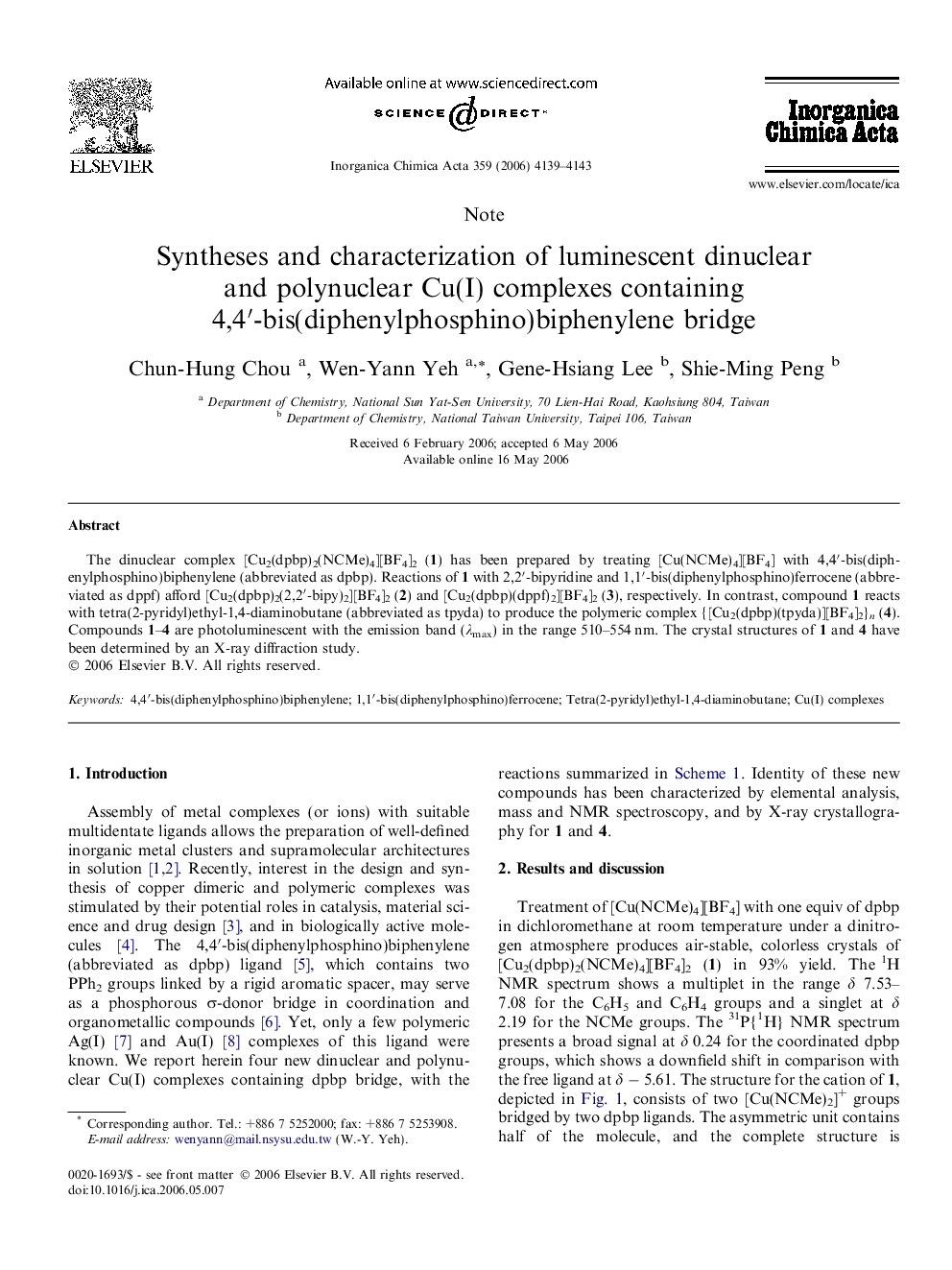| Article ID | Journal | Published Year | Pages | File Type |
|---|---|---|---|---|
| 1312937 | Inorganica Chimica Acta | 2006 | 5 Pages |
The dinuclear complex [Cu2(dpbp)2(NCMe)4][BF4]2 (1) has been prepared by treating [Cu(NCMe)4][BF4] with 4,4′-bis(diphenylphosphino)biphenylene (abbreviated as dpbp). Reactions of 1 with 2,2′-bipyridine and 1,1′-bis(diphenylphosphino)ferrocene (abbreviated as dppf) afford [Cu2(dpbp)2(2,2′-bipy)2][BF4]2 (2) and [Cu2(dpbp)(dppf)2][BF4]2 (3), respectively. In contrast, compound 1 reacts with tetra(2-pyridyl)ethyl-1,4-diaminobutane (abbreviated as tpyda) to produce the polymeric complex {[Cu2(dpbp)(tpyda)][BF4]2}n (4). Compounds 1–4 are photoluminescent with the emission band (λmax) in the range 510–554 nm. The crystal structures of 1 and 4 have been determined by an X-ray diffraction study.
Graphical abstractThe luminescent dinuclear complexes [Cu2(dpbp)2(NCMe)4][BF4]2 (1), [Cu2(dpbp)2(2,2′-bipy)2][BF4]2 (2) and [Cu2(dpbp)(dppf)2][BF4]2 (3), and the polynuclear complex {[Cu2(dpbp)(tpyda)][BF4]2}n (4) have been prepared and characterized, where dpbp = 4,4′-bis(diphenylphosphino)biphenylene, dppf = 1,1′-bis(diphenylphosphino)ferrocene, and tpyda = tetra(2-pyridyl)ethyl-1,4-diaminobutane.Figure optionsDownload full-size imageDownload as PowerPoint slide
